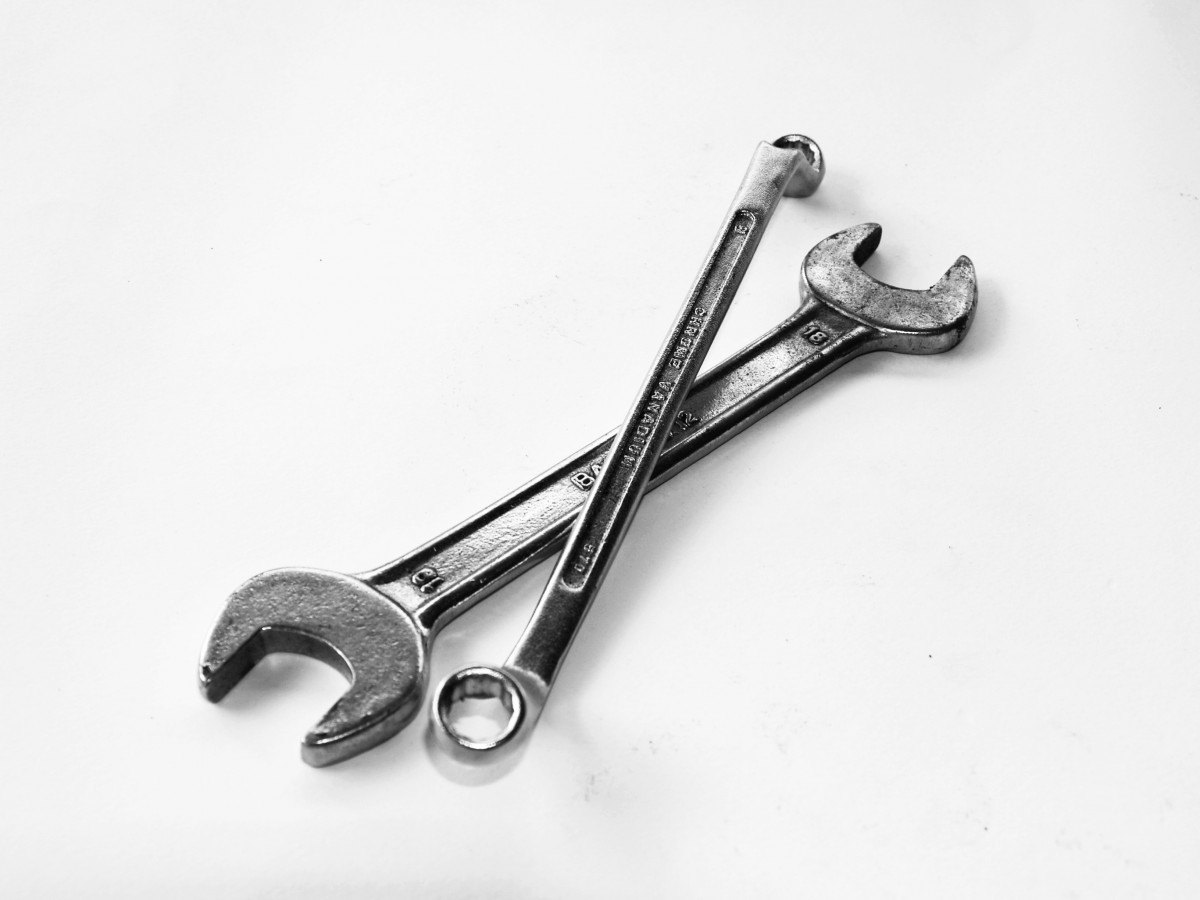The Ultimate Toolkit for Mechanics: Essential Tools for Every Job
In the demanding world of mechanics, having the right tools isn’t just a convenience—it’s the foundation of efficiency, safety, and quality workmanship. A well-equipped toolbox is a mechanic’s most prized possession, representing an investment in their career and a readiness for any challenge. Whether you’re a seasoned professional, a burgeoning apprentice, or a dedicated DIY enthusiast, understanding the essential tools and their proper use is paramount. This comprehensive guide delves deep into the non-negotiable items that should reside in every mechanic’s arsenal, ensuring you’re prepared for routine maintenance, complex diagnostics, and everything in between. We’ll explore the core categories of tools, focusing on quality, functionality, and longevity, ultimately aiming to equip you with the knowledge to build the ultimate, Adsense-optimized toolkit.
Core Categories of a Mechanic’s Toolkit
A comprehensive mechanic’s toolkit can be organized into several core categories, each serving a distinct but equally critical function in vehicle repair and maintenance.
The Fastening and Turning Essentials: Wrenches and Sockets
The most fundamental tasks in mechanics loosening and tightening nuts and bolts rely heavily on a versatile set of wrenches and sockets. These tools are the workhorses of any shop.
A. Combination Wrenches: These feature an open end on one side and a closed (box) end on the other, typically of the same size.
B. Socket Sets: Offering superior grip and allowing use with a ratchet for speed and leverage, sockets are indispensable. A good set should include both standard (SAE) and metric sizes, in 6-point and 12-point varieties, and in $\frac{1}{4}$-inch, $\frac{3}{8}$-inch, and $\frac{1}{2}$-inch drive sizes.
C. Ratchet Handles: Essential for driving sockets, ratchets should be durable and feature a high tooth count for finer adjustments in tight spaces.
D. Torque Wrench: Crucial for applying a specific, predetermined amount of rotational force (torque). Using a torque wrench ensures components like cylinder heads and wheel lugs are fastened correctly, preventing damage or failure. There are various types:
1. Click-Type: The most common, making an audible click when the set torque is reached.
2. Beam-Type: Simple and durable, using a needle and scale to indicate torque.
3. Digital: Offering high precision and sometimes including memory and data logging features.
E. Extensions and Adapters: These pieces extend the reach of sockets and allow different drive sizes to be used together, greatly enhancing flexibility.
Gripping, Cutting, and Prying Tools: Pliers, Snips, and Bars
These tools are crucial for manipulating, cutting, and removing various components, from wires and hoses to stubborn fasteners.
A. Pliers: A diverse group, essential types include:
1. Needle-Nose Pliers: For precision work, bending wire, and accessing small spaces.
2. Slip-Joint Pliers: Versatile, with an adjustable pivot point.
3. Locking Pliers (Vise-Grips): Provide a strong, clamping grip.
4. Diagonal Cutting Pliers (Snips): For cutting wires, small nails, and similar materials.
B. Adjustable Wrench (Crescent Wrench): While not a substitute for a dedicated wrench, it’s useful for odd-sized fasteners or as a backup.
C. Pry Bars: Used for leverage to move or separate components, ranging from small trim tools to large, heavy-duty bars.
Impact and Shaping Tools: Hammers and Chisels
Sometimes, precision requires force. Hammers and chisels are used for driving, shaping, and breaking stubborn or damaged parts.
A. Ball-Peen Hammer: The mechanic’s standard hammer, used for striking punches and chisels, and for shaping metal (peening).
B. Rubber Mallet/Dead Blow Hammer: Used to strike surfaces without causing damage (e.g., body panels, delicate components) or to deliver a non-rebounding blow.
C. Chisels and Punches:
1. Cold Chisel: Used for cutting or shaping metal that is not heated.
2. Pin Punch: For driving out pins or rivets.
3. Center Punch: Used to mark the center of a point before drilling to prevent the drill bit from wandering.
The Power of Fastening: Screwdrivers
No toolkit is complete without a full complement of screwdrivers. Quality is key here, as poor-quality tips can easily strip screws.
A. Phillips Head Screwdrivers: The common “cross” pattern.
B. Flathead (Slotted) Screwdrivers: The traditional single-slot pattern.
C. Torx and Hex (Allen) Keys/Drivers: Increasingly common in modern vehicles for various components.

Specialty and Diagnostic Equipment
As vehicle technology advances, the need for specialized tools and diagnostic equipment becomes more pronounced. These are often high-value items that significantly increase a mechanic’s capability and profitability.
Measuring and Inspection Tools
Accurate measurement is critical for diagnosing wear and ensuring proper clearances and tolerances.
A. Vernier Caliper/Digital Caliper: Used to precisely measure linear dimensions, such as the diameter of a brake rotor or the depth of a bore.
B. Feeler Gauges: A set of thin metal blades used to measure narrow gaps or clearances, such as valve clearances or spark plug gaps.
C. Micrometer: Provides extremely precise measurements, often used for critical dimensions like crankshaft journals or cylinder bore diameters.
D. Multimeter: An electronic measuring instrument that combines several measurement functions, including voltage, current, and resistance (Ohms). Essential for electrical diagnostics.
E. Tire Pressure Gauge: A fundamental safety tool, ensuring tires are inflated to the correct pressure for optimal performance and wear.
Diagnostic and Scanners
Modern vehicle repair heavily relies on electronic diagnosis.
A. OBD-II Scanner (On-Board Diagnostics II): Absolutely non-negotiable for reading and clearing Diagnostic Trouble Codes (DTCs) and accessing live data from a vehicle’s Engine Control Unit (ECU).
B. Test Light/Circuit Tester: Used to quickly check for the presence of electrical voltage in circuits.
C. Inspection Camera (Borescope): Allows a mechanic to view hard-to-reach areas, such as inside cylinders or behind dashboards, without disassembly.
Essential Workshop Equipment
Some tools are too large or specialized to carry but are staples in any professional shop.
A. Hydraulic Jack and Jack Stands: Lifting and safely supporting a vehicle is the first step for most under-car work. Never work under a vehicle supported only by a jack.
B. Creeper: A low-profile dolly that allows a mechanic to easily roll under a lifted vehicle.
C. Oil Filter Wrench: Specific tools designed to grip and remove oil filters without damaging them.
D. Funnel and Drain Pans: Essential for clean and environmentally responsible fluid changes (oil, coolant, transmission fluid).
E. Air Compressor and Pneumatic Tools: Air tools (impact wrenches, air ratchets, grinders) save immense time and effort, especially for heavy-duty fasteners.
Building a Quality and Profitable Toolkit
The temptation to buy the cheapest tools available can be strong, but for a professional mechanic focused on efficiency and long-term earnings (which aligns with a focus on business sustainability and thus, Adsense relevance), quality is paramount.
Investing in Durability and Ergonomics
A. Materials: Look for tools made from Chrome Vanadium (Cr-V) or Chrome Molybdenum (Cr-Mo) steel, which offer superior strength and longevity.
B. Ergonomics: Tools with comfortable, non-slip handles reduce fatigue and the risk of injury over long shifts.
C. Warranty: Reputable tool brands offer excellent warranties, often replacing broken tools for life. This is a crucial factor in calculating the total cost of ownership (TCO).
Organization is Key to Efficiency
A mechanic’s income is directly tied to the time it takes to complete a job. A disorganized toolbox is a hidden time sink.
A. Toolbox: Invest in a sturdy, multi-drawer tool chest or rolling cabinet with ample space and good drawer slides.
B. Tool Control: Use foam cutouts or magnetic trays to keep tools in their specific spots. This allows for quick identification of missing tools at the end of a job.
C. Labeling: Clearly label drawers and tool locations to streamline retrieval.
Safety First: Protective Gear
Safety is an intrinsic part of professional mechanics. No tool is more important than your personal protective equipment (PPE).
A. Safety Glasses/Goggles: Protect the eyes from flying debris, sparks, and chemical splashes.
B. Gloves: Protect hands from cuts, abrasions, and harmful chemicals. Choose different types for specific tasks (e.g., impact gloves, chemical-resistant gloves).
C. Hearing Protection: Muffs or earplugs are essential when using loud pneumatic tools or working in a noisy shop environment.
D. Fire Extinguisher: A basic, crucial safety item for any workshop.
Profitability and Preventive Maintenance (PM) Tools
A significant portion of a mechanic’s revenue comes from high-volume Preventive Maintenance (PM) services. Having dedicated, efficient tools for these tasks maximizes throughput and profit.
A. Fluid Service Equipment:
- Brake Bleeder Kits (Vacuum or Pressure): Allows a single mechanic to efficiently and thoroughly flush old fluid and remove air from the brake system.
- Coolant System Pressure Tester: Used to pressurize the cooling system to quickly find minor leaks in radiators, hoses, or gaskets before they lead to catastrophic overheating. ‘
- Transmission Fluid Flush Machine: Modern, sealed transmissions often require specialized machines to precisely exchange the fluid without contamination.
B. Specialized Engine Service Tools:
- Compression and Leak-Down Testers: Used to evaluate the mechanical health of the engine by checking piston ring, valve, and head gasket sealing, vital for troubleshooting performance issues.
- Cam/Crank Holding Tools: Modern engines often use variable valve timing (VVT) and require specific tools to lock the camshafts or crankshaft during timing belt or chain replacement, preventing costly engine damage
C. Brake Service Tools:
- Brake Caliper Wind-Back Tools: Essential for servicing disc brakes with electronic parking brakes (EPB) or standard calipers that require the piston to be rotated and compressed simultaneously.
- Rotor Micrometers: For accurately measuring brake rotor thickness to determine if they can be safely resurfaced or must be replaced.
Organization, Software, and Digital Workflow
The ultimate toolkit extends beyond physical implements to include the digital tools that manage a modern repair business. These enhance efficiency, record-keeping, and customer service.
A. Digital Shop Management Software (SMS): This is the foundation of a profitable operation, integrating:
- Work Order Management: Tracking job status, parts ordering, and labor time.
- Customer Relationship Management (CRM): Storing vehicle history and scheduling maintenance reminders.
- Invoice and Billing: Streamlining the payment process.
B. Technical Information Systems (TIS) Access: Paid subscriptions (e.g., AllData, Mitchell 1) that provide mechanics with manufacturer-specific repair procedures, wiring diagrams, and technical service bulletins (TSBs). This information is non-negotiable for complex or new vehicle models.
C. Portable Work Light/LED Lighting: Modern, high-lumen, rechargeable LED lights are a massive improvement over traditional shop lights, allowing for superior visibility deep within the engine bay or under the vehicle, directly reducing inspection time and missed problems.
D. Tool Inventory Tracking: Implementing a system, either through dedicated software or physical foam inserts (Tool Control), to quickly confirm all tools are accounted for before the vehicle leaves the bay. This prevents tools from being left in the engine bay (a major liability) and eliminates time wasted searching for a misplaced wrench.
By viewing the toolkit as an ecosystem of specialized hand tools, high-end diagnostic equipment, and efficient digital management systems, a mechanic ensures they are not just fixing cars, but running a highly competitive, safe, and profitable operation. This complete approach to preparedness is what truly defines The Ultimate Toolkit for Mechanics.

Conclusion: The Evolution of the Mechanic’s Arsenal
The ultimate toolkit is not a static collection; it’s an evolving arsenal that grows with the mechanic’s experience and the rapid changes in automotive technology. By prioritizing high-quality wrenches, sockets, diagnostic scanners, and safety gear, a mechanic lays the groundwork for a successful, profitable, and safe career. Remember, every dollar invested in durable, specialized tools is a direct investment in faster job times, fewer mistakes, and higher customer satisfaction all elements that contribute to a thriving professional practice and robust financial health.











